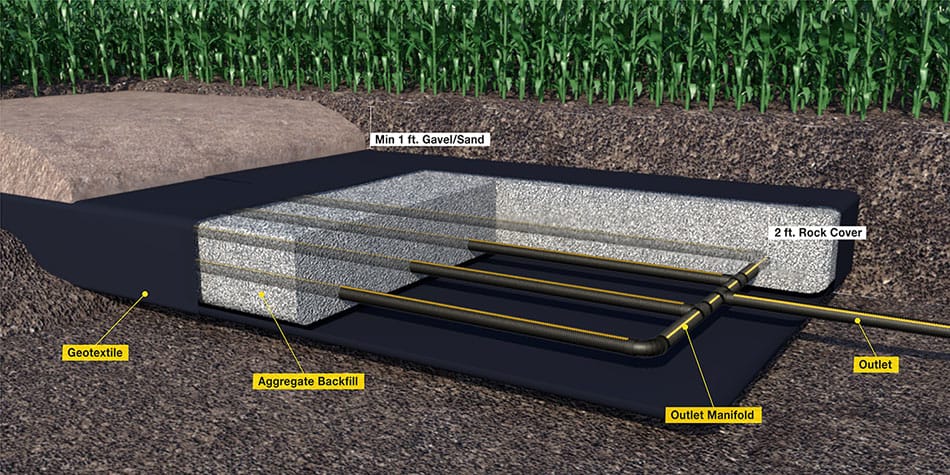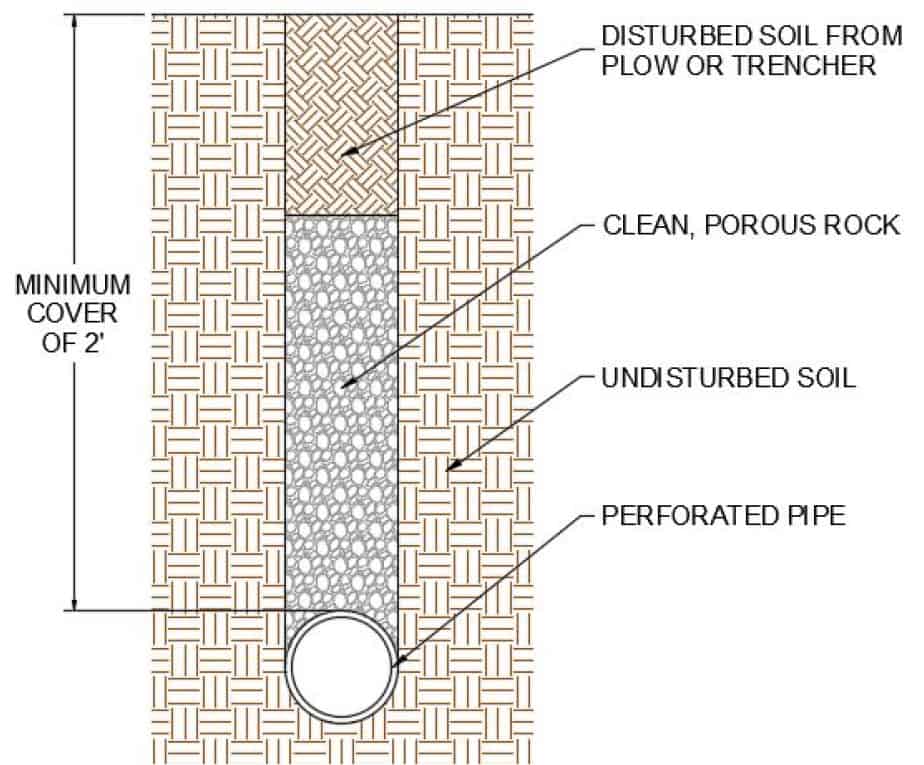
Blind Inlet
Practice Overview
Tightly spaced tile is laid in a bed of highly permeable backfill (rock, sand, etc.) to allow surface water to quickly infiltrate and enter the drainage system without direct surface inlets.
Benefits
- Reduced sediment erosion
- Phosphorus reduction
- Removes surface water
- Keeps trash & debris out of tile system
- Maintain farming operations (some designs)
How It Works
Various designs can be used to accomplish the same objective.
Rock-Bed Style
Pipe is placed at the bottom of a bed of rock backfill, capped with sand or soil (shown above). A geotextile should be used as a barrier around the rock keep it porous. This is the standard design for NRCS Underground Outlet
(Code 620).
French Drain Style
Narrowly spaced laterals are backfilled with rock or sand above the pipe, commonly done with open-trench, or gravity-fed rock box on a tile plow boot. Spacing and amount of backfill will vary depending on soil and site conditions. This is a more economic version of the above bed-style blind inlet.

Installation Considerations
Layout, pipe size, backfill material, backfill amount, can all be optimized depending on the site.
- Maintain a minimum of 24” of cover above the top of the pipe
- Use narrow slot or socked tile if backfill includes fines
Costs
[TBD]
Resources & Funding
- NRCS Codes (620)
- NRCS Blind Inlet Design Calculator
- OSU Ag BMPs
- UW Tile Surface Inlet Replacement